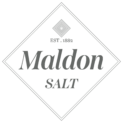An optimal website is about more than well-written content. It’s also about engaging with the rich seams of data that run through your website, carrying valuable information about how visitors engage with it. This can help you to understand what’s working with your site’s constituent pages and what could be improved.
You can track numerous metrics to better understand how users interact with your website. Here, however, we will focus on just one of those: the average dwell time. This is how long a user spends on a page before navigating back to the search engine results page (SERP). It is not to be confused with time on page, which measures how long users spend there before navigating elsewhere within the same website. Dwell time is a very useful performance indicator, helping you to quantify a page’s efficacy.

Dwell time is not necessarily a contributory factor to SEO rankings. At least not directly. Nonetheless, there is a distinct correlation between high-ranking pages and pages with higher dwell times. Pages with lower dwell times invariably have higher bounce rates, and these may be interpreted as poor design or a mismatch between copy and search intent.
Think of every time you’ve looked up a recipe and had to wade through a lengthy and uninteresting personal anecdote (often a cynical attempt to increase scroll depth) to get to the ingredients list. In this case, many will bounce back to the SERP in frustration, resulting in a low average dwell time for the recipe page.
This may not necessarily negatively affect the page’s SEO. After all, a well designed page might have a short dwell time specifically because it is intended for quick reference and does its job well. However, it may indicate to the page’s owner that the recipe does not get the engagement they had hoped for.
Making changes to the structure of the page, leading with more pertinent information and tracking the impact of these changes on dwell time may indicate that the page has become more effective.
Broadly speaking, the longer the average dwell time, the more engaging users find the page’s content.
Here are some tips to help you improve yours:

Pages experience lower dwell times and higher bounce rates when they do not directly address the reader. This does not necessarily mean starting a post with ‘Hey, you. Put down that cup of coffee and pay attention because you’re not going to want to miss this!’ Rather, it means directly addressing the search query that likely brought the reader to your page. Referring back to the recipe blog posts that start with tortuously lengthy and irrelevant anecdotes, these commit the cardinal sin of making the reader wade through several paragraphs of filler to get to the recipe they were looking for. Some may well persevere, yet many will simply navigate back to the SERP. Therefore, be sure to address, or at least acknowledge, the user’s search query early in your copy.
You know what they say about first impressions. If your introduction is engaging, forthright and relevant to the reader’s intent they are much more likely to keep scrolling. Well-composed introductions will often feature an open-ended question, a direct appeal to ‘you’ the reader, or an eyebrow raising statistic.
A compelling hook can grab the reader’s attention and give them a reason to spend more time on the page as you lay out your thesis, and potentially encourage a call to action for the reader.
That said, even the most persuasive introduction will not hold the reader’s attention for too long. Let’s take a look at how you can keep readers on the page and get the kind of engagement you’re looking for.
You write your online content to inform rather than to entertain. But, that doesn’t mean that your reader shouldn’t be engaged on some level – if only subliminally l. The reader will judge the quality of your copy based on their emotional reaction as well as the quality of its contents. Therefore, while you want the reader to think, that doesn’t mean you don’t also want them to feel.
You may want to provoke a knowing smile as they scroll, shock them by shattering their preconceptions, or create a sense of comfort and reassurance to build trust in your brand.
Like any good storyteller, you need to establish a sense of mood and tone of voice that are appropriate to both your brand and the content.
Short sentences rule!
They’re punchy, palatable and attention-grabbing.
But longer sentences are also essential. They can accommodate detailed and nuanced information, made more digestible by your ever-reliable ally, the Oxford comma.
But look. When we combine short and long sentences, something quite wonderful happens. Your copy finds a rhythm. A pace. An asymmetry that is pleasing and compelling. Monotony may cause a reader’s thoughts to drift, but incongruities in sentence structure can be a powerful tool in keeping the reader’s attention.
Nobody likes navigating their way through a SERP and clicking on a promising result, only to be confronted by a forbidding slab of text. No matter how expertly the content may answer the user query, they are unlikely to mine the information they need from such an impenetrable facade.
Subheadings are invaluable to both copywriters and readers. For the latter, they break up the text and make it easier to parse or cherry-pick for quick reference. For the former, they help to provide a sense of structure and flow, creating a roadmap for each draft and making the creative journey less daunting.
It may even be worth prefacing your page with a clickable table of contents so that the reader can directly navigate to the subheading most relevant to their search query. While this may not directly contribute to average dwell times, it can reduce your bounce rates and increase the quality of reader engagement.
While dwell time may not be a direct SEO metric, it remains an important performance metric that yields valuable insight into the value of your written content.
If you’re looking for engaging copy that keeps readers on the page and consistently brings them back to your website, our talented team will be more than happy to help.











